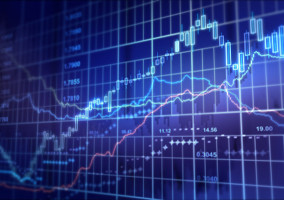Indicators of a strong post-Covid-19 recovery keep coming out of the US and other major developed economies, but upside data surprises have brought with them concerns about rising inflation. Will this prove a fleeting inflation spike? Or could it become a lasting trend?
For the most part, the inflation fixation is focused on the US. This makes sense because the US accounts for the largest share of global demand, the dollar is the predominant global funding currency and inflation is as much a global phenomenon as it is a domestic one. Perhaps most importantly, global bond markets often move in tandem: changes in US Treasuries are felt in bond markets all over the world.
Clearly inflation risks have increased. Core US CPI inflation, which excludes volatile elements such as food and energy prices, rose by 4.5% year-on-year in June – its largest move since 1991.
But we do not agree with theories of runaway inflation. The main reason for recent inflation spikes is that prices were abnormally low a year ago. And the rate at which they’ve since risen has been exacerbated by Covid-19 related dislocations in spending, employment, production and logistics.
We also think there are heavy, long-term phenomena that will keep inflation subdued, as they have for many years. The structural trends of automation and digitisation, producing more with less, will continue, for example. Meanwhile, the world is even more indebted than it was before the pandemic and many people have been thrown out of work by the pandemic - limiting increases in spending and wages.
In short, we believe – as US Federal Reserve chairman Jerome Powell has been at pains to note — that unusually high US inflation will be transitory. To clarify exactly what we mean by transitory, we don’t mean that inflation will be back ‘on target’ by year-end. Instead, we see it peaking in the next month or two, before falling back toward 2% throughout 2022.
Certain about uncertainties
That said, no-one can claim fully to understand the consequences of the unprecedented degree of money creation during the pandemic. The degree of uncertainty around the inflation outlook is larger than anything investors have had to face for the best part of a decade (and arguably three). That also creates considerable uncertainty around the outlook for bond yields and equity valuations. Inflation risks over the next 18 months are skewed to the upside, which is something we think it’s wise to be positioned for, in and of itself.
What does this mean for charity investors seeking to ensure that portfolios keep pace with – and ideally grow ahead of – inflation?
Investment implications
Concerns over higher inflation generally coincide with higher bond yields. Bond yields tend to price in the expectation of interest rate hikes when inflation hots up. But, after a nervy start to the year, bond yields have been proving surprisingly steady. Bond investors seem more confident that policymakers won’t renege on pledges to keep monetary stimulus flowing. We expect bond yields to drift gradually higher, but plentiful monetary stimulus should underpin bonds as long as investors remain convinced that high inflation won’t become entrenched.
The earnings underlying equity markets are typically a good hedge against inflation. Investors can take comfort from our historical analysis showing that corporate profits have rarely failed to keep pace with inflation. In the higher-inflation 1970s and 1980s, companies still managed to deliver profit growth in real (inflation adjusted) terms. While earnings tend to be able to cope with inflation, equity valuations can suffer if real rates rise, increasing the discount applied to expected future earnings. Our analysis shows valuations have already built in a buffer against an increase of about half a percentage point in real rates.
This time last year we felt it made sense to shift toward good-quality, cyclical companies that stood to benefit from a strong post-Covid-19 rebound. Leading economic indicator (LEIs) are now near all-time highs, and we believe they’re likely to stay elevated due to the nascent boom in capital spending, inventory rebuilding and the ongoing resumption of activity in the service sector. However, there is a risk that elevated LEIs start to roll over. While we don’t see this as the most likely scenario, if it were to happen it could mean a change of stock market leadership away from cyclicals, which now look more expensive after an unprecedentedly strong run.
As LEIs have risen, so-called ‘value’ shares (with cheaper valuations) have also outperformed more expensive growth companies whose earnings tend to be strong across economic cycles, such as big tech. But value and cyclicality can decouple. Stocks that tend to do well in periods of rising inflation or bond yields have also outperformed this year, but we think there is more scope for this to continue. These stocks are more likely to be found in sectors with a higher representation in value indices
We think it also makes sense to look to individual stocks whose business models might enjoy greater inflation resilience.
As risks to a post-Covid-19 reopening have dissipated, risks from rising real yields and inflation have risen substantially. US inflation above 2% over the next two years is a profound change (compared with the sub-2% average of the last decade) that all longer-term investors must note.
Andrew Pitt, head of charities, London, Rathbones
Related articles
Andrew Pitt: Life after the virus
Andrew Pitt from Rathbones considers the risks and opportunities for charity investors in 2021
Andrew Pitt: A path through the bear market - what does Covid-19 mean for charity portfolios?
Andrew Pitt from Rathbones looks at what charity investors should be doing during the Covid-19 pandemic
Andrew Pitt: A global economic overview for charities
Andrew Pitt explains how the global economy evolved in 2018 and explores the risks and opportunities for the year ahead.












